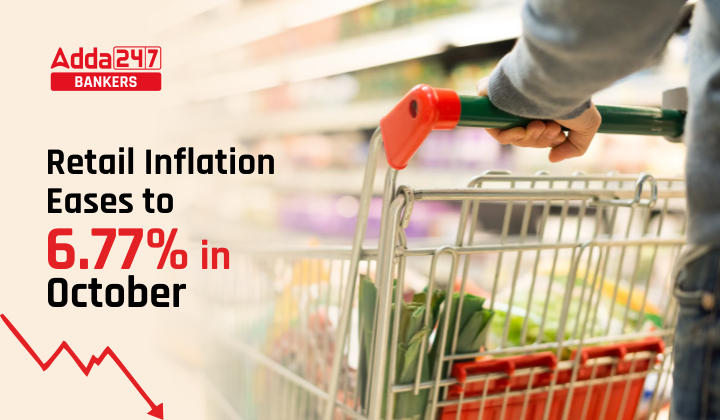Table of Contents
Retail inflation eases to 6.77% in October: Retail inflation in India dropped significantly from 7.41 percent in September 2022 to 6.77 percent in October. For the tenth consecutive month, the number has remained above the RBI’s tolerance range of 2 to 6 percent.
Retail inflation eases to 6.77% in October: Key Points
- From 0.57 percent in the previous month, the headline inflation increased to 0.80 percent this month. The positive base effect is to blame for the decrease in headline inflation. However, the inflationary pressure is still being pushed forward by supply-chain disruptions brought on by ongoing geopolitical factors and a global hardening of commodity prices.
- Exogenous price shocks are one of the causes of India’s problems with rising consumer prices, but analysts believe there are still many other factors that will lead to an elevated inflation rate, so the outlook is still gloomy. Assuming high inflation and high-interest rates, rating agencies recently lowered their projections for India’s growth, including Moody’s.
- Vegetable prices increased by 7.7% annually. In the meantime, fuel and light inflation decreased to 9.93% from 10.39% in September.
- The uncertain nature of the Russia-Ukraine war compounded supply-side disruptions in the post-pandemic world that was merely going through a nascent recovery from economic shocks, raising concerns about higher inflation among central banks around the world, including India.
- The RBI is deemed to have failed in managing price increases under the flexible inflation targeting framework introduced in 2016 if the CPI-based inflation is outside the 2–6% range for three consecutive quarters.
What is Inflation?
Price increases, or inflation, can be thought of as the gradual loss of purchasing power. The average price increase of a selection of goods and services over time can serve as a proxy for the rate at which purchasing power declines. A unit of currency effectively buys less as a result of the increase in prices, which is frequently expressed as a percentage. Deflation, which happens when prices fall and purchasing power rises, can be compared to inflation.
What is Headline Inflation?
Headline inflation is the raw inflation figure reported by the Bureau of Labor Statistics (BLS) monthly Consumer Price Index (CPI). The CPI calculates the cost of purchasing a fixed basket of goods to determine the level of inflation in the economy as a whole. The CPI employs a base year and indexes current-year prices to the values of the base year.
What are the effects of Inflation?
Inflation can have a variety of effects on the economy. For example, if inflation causes a country’s currency to fall, this can benefit exporters by making their goods more affordable when priced in foreign currencies. On the other hand, this could hurt importers by raising the cost of foreign-made goods. Higher inflation can also encourage spending because consumers will want to buy goods before their prices rise even further. Savers, on the other hand, may see their savings lose real value, limiting their ability to spend or invest in the future.



 100+ Important Current Affairs 2024 Ques...
100+ Important Current Affairs 2024 Ques...
 Current Affairs Questions and Answers 23...
Current Affairs Questions and Answers 23...
 Weekly Current Affairs One-Liners: 15th ...
Weekly Current Affairs One-Liners: 15th ...



